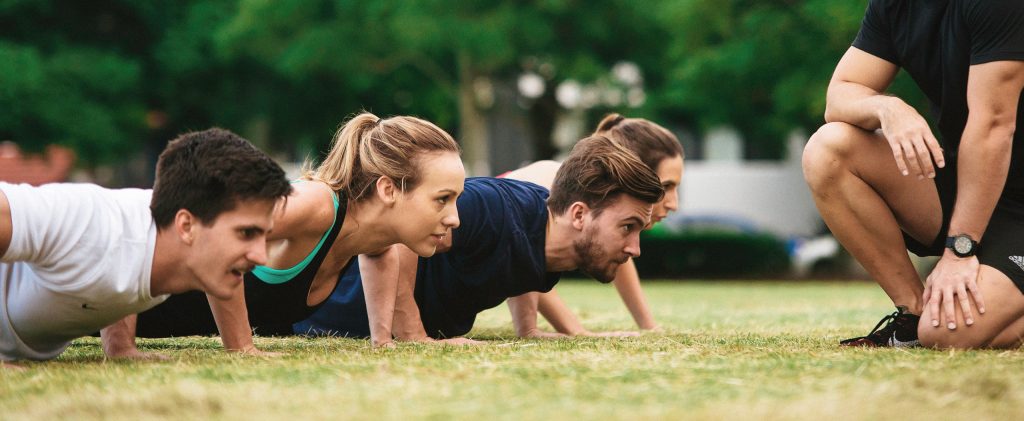 Beginners will master the foundations of resistance training in this semi-private, four-week program delivered by JS-PT’s qualified and experienced health professionals.
Beginners will master the foundations of resistance training in this semi-private, four-week program delivered by JS-PT’s qualified and experienced health professionals.
Limited spaces – four-person cap per class. | Starts Monday 14 November 2022.
Established in 2009, JS-PT is one of Brisbane’s longest-running and most respected health businesses. Visit the new appointment-only flagship studio in Milton today.
What you’ll get
- A four-week ‘workshop to workout’ program designed for you to learn the fundamentals of resistance training and how to safely and effectively practice it.
- Each class will include an educational component and end with a complete workout so you leave feeling satisfied mentally and physically.
- You will learn how to safely and effectively perform the five fundamental movement patterns that form the foundations of all resistance training.
- Classes delivered in a semi-private setting that are capped at four people per class.
- Education from personable, supportive and experienced health professionals with a combined experience of 40+ years.
- The opportunity to meet like-minded people on a similar health journey to you.
Your commitment
- Attendance to two 45-minute classes per week over four weeks.
- An open mind and willingness to have a go.
The outcome
- Complete confidence in understanding and performing resistance training safely and effectively whenever and wherever you train in the future.
- Meeting a new support network of like-minded people in a health-focused setting.
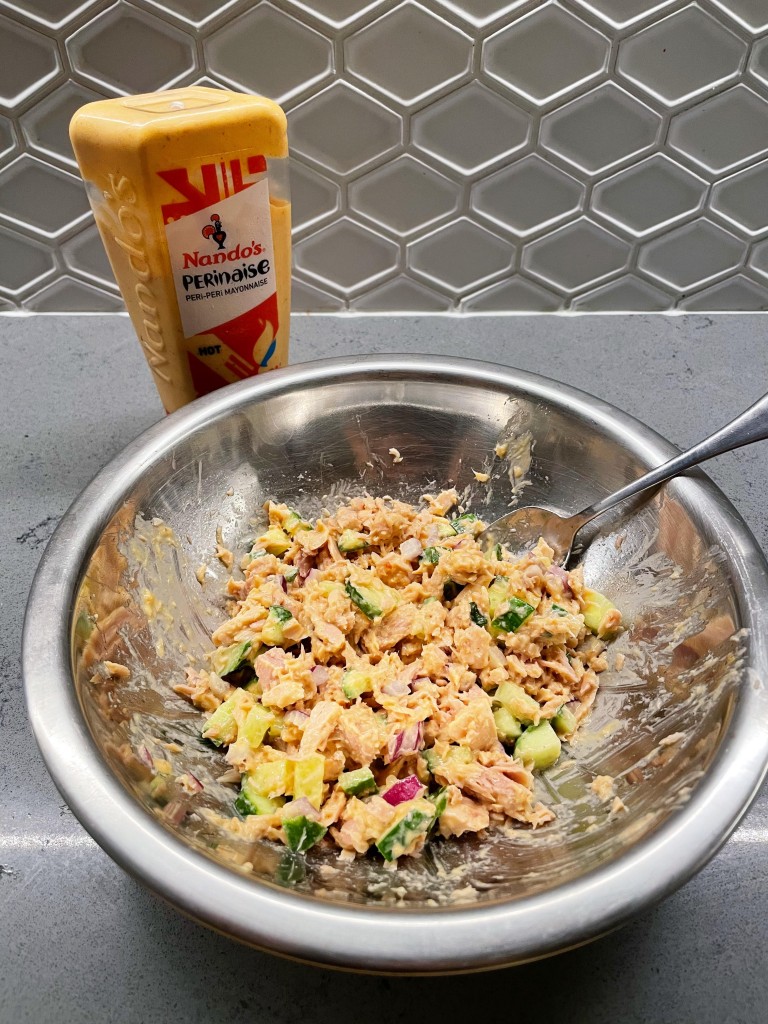
Not all food needs to look restaurant worthy to be beneficial for your health.
The above tuna salad used what was in the pantry and fridge, and made two sandwiches.
Ingredients:
- 2x Sirena Tuna cans (Basil infused flavour)
- 1x handful of diced red onion
- 1x handful of diced cucumber
- Nandos hot perinaise (1/3 the calories of mayonnaise)
Use the desired amount of perinaise, mix it all together, cover and leave in the fridge. Use it the next day to make a sandwich. I like to add some lettuce/spinach + tomato to add more vegetables to the sandwich. Additionally, this could be eaten just as a salad with additional greens or eaten with rice. The take home point is, this took under five minutes to prepare, and has sorted out two meals!
Enjoy!
James
Are you keen to tick off some personal running goals by completing your first half marathon or full marathon? Or are you a runner needing an event for some extra motivation during your weekly kilometres? Luckily for you, there are plenty of cracking running events around Australia for the back half this year.
Here are our picks for the coming months:
1. Australian Outback Marathon
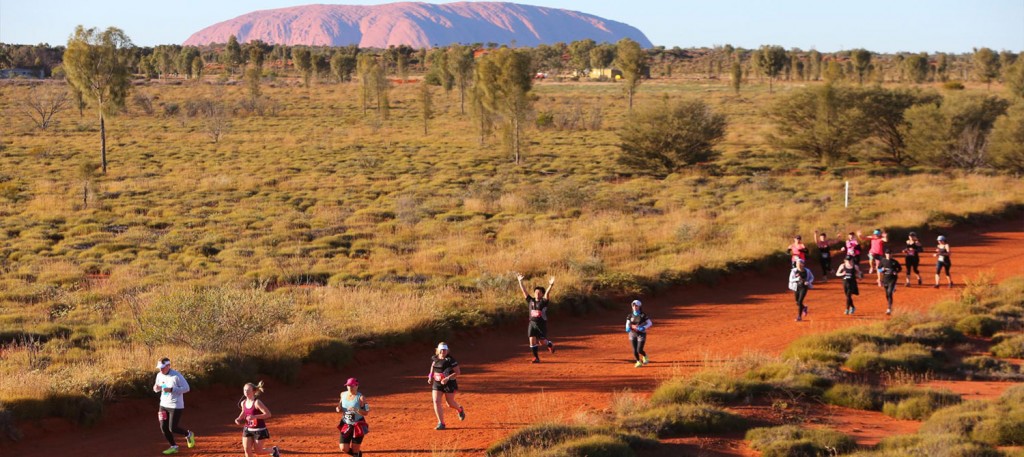
Photo by www.australianoutbackmarathon.com.
Now this is one of the more uniquely Australian runs you could go on – running while experiencing the stunning views of Uluru and Kata Tjutu. A once in a lifetime experience. With the event options including a 6km and 11km run, plus a half marathon and marathon, there’s something for everyone. Be quick though, limited spaces left!
2. Gold Coast Marathon
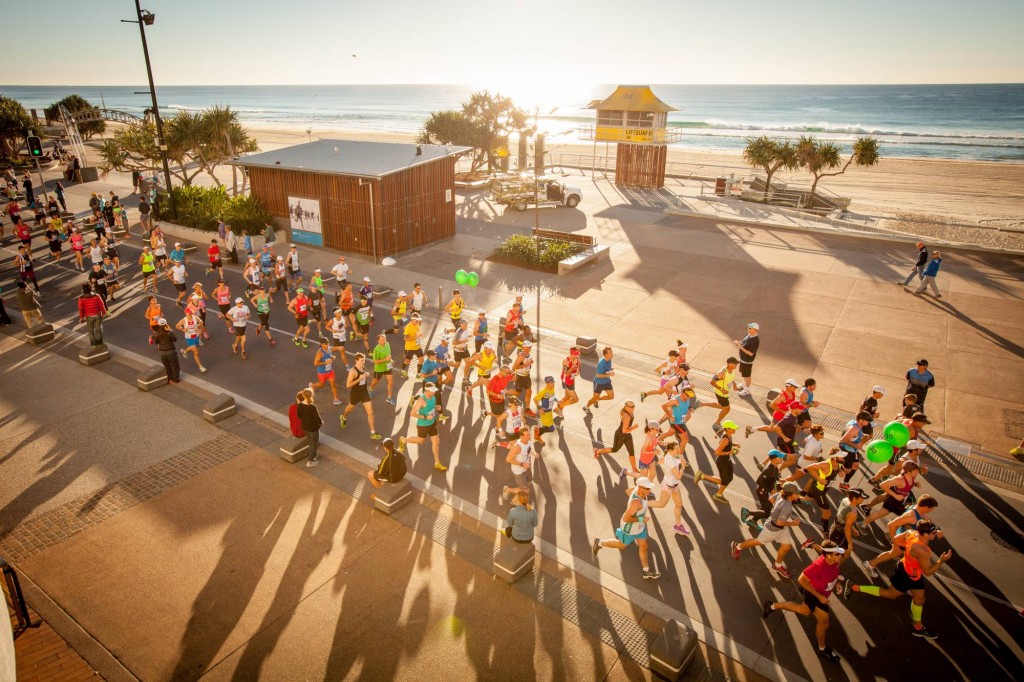
Photo by http://www.voyagerresort.com.au
From the outback, to the iconic holiday destination of The Gold Coast. This is one of the bigger running events on the QLD calendar which include a host of events such as the marathon and half marathons, as well as fun runs, junior runs, and wheelchair races. Enjoy some of the best beaches in Australia when you are done and dusted!
3. Winery Running Festival
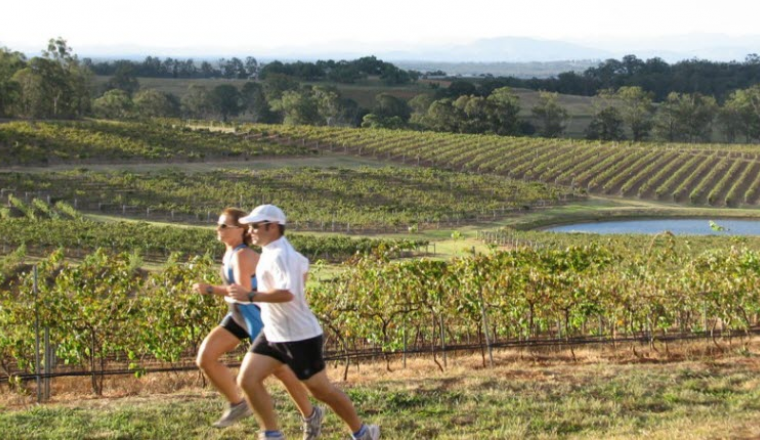
Image by https://www.vintry.com.au/event/winery-running-festival/
Yes, this is as good as it sounds! Experience the Hunter Valley on foot before enjoying by the glass. For those looking at the full 42km, it is a special night time run on a 10.5km loop through the exclusive Vintage golf resort and spa, with a post event party in the wineries of the Hunter Valley. Where do I sign up (*hint: here)? Also includes a 6km and 10km run, half marathon, and 2km kids run.
4. City2Surf
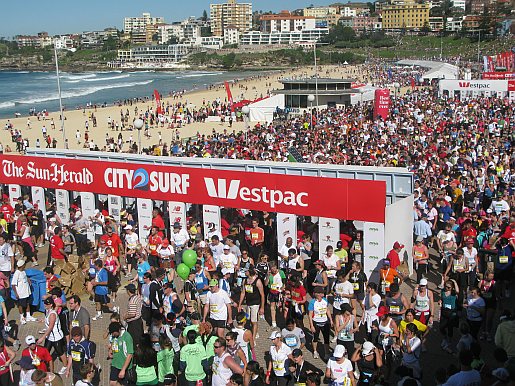
Photo by http://www.waverley.nsw.gov.au
Now to Sydney with the famous City2Surf; a breathtakingly beautiful course which runs from Hyde Park (CBD) to Bondi Beach. At 14km, it’s a good mid range distance to work towards for less experienced runners, and long enough for a decent hit out for the experienced runners.
5. Run Melbourne
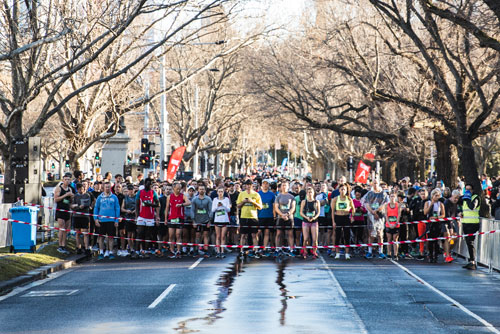
Photo by https://events.solemotive.com/run-melbourne/
Experience Melbourne’s city streets on foot while passing through sites such as the Botanic Gardens and the MCG. Run Melbourne’s mission is to empower the city to be active run but also for participants to raise money for a charity of their choice. Events include a 5km and 10km fun run, as well as a half marathon.
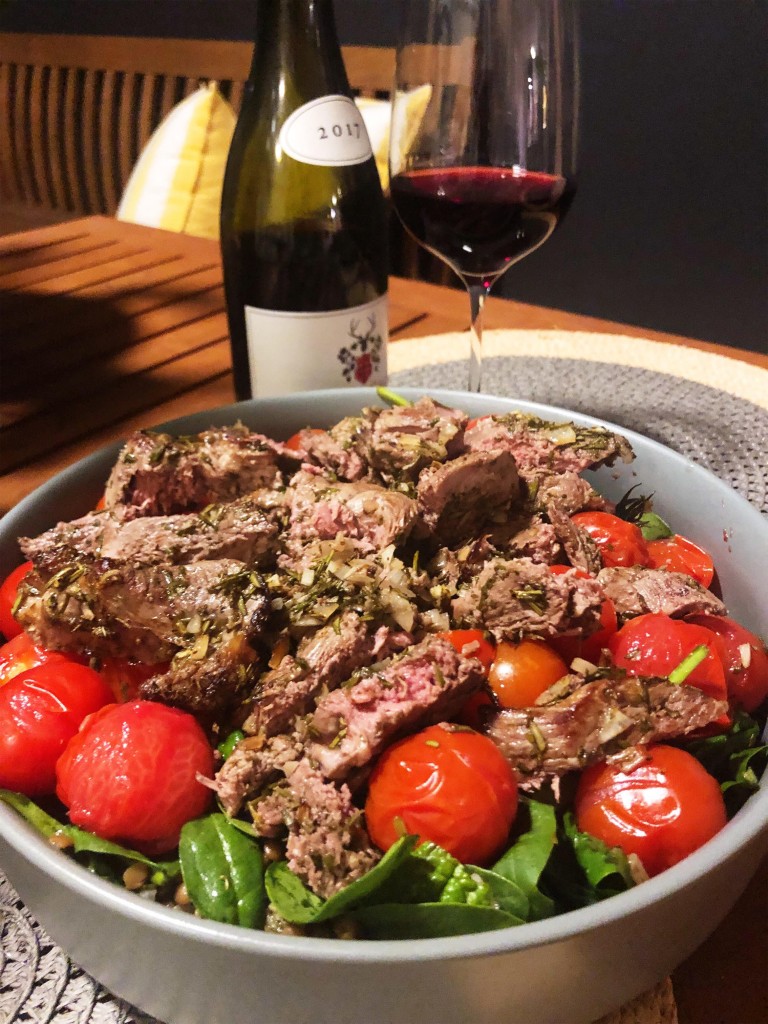
Rosemary lamb with lentils and roasted tomatoes + a nice glass of red
A delicious lamb recipe thanks to Coles magazine!
Ingredients:
- 1 small onion, coarsely chopped
- 2 garlic cloves
- 1 bunch oregano
- 1 bunch rosemary
- 1/2 extra virgin olive oil
- 500g lamb steaks
- 500g vine ripened tomatoes
- 400g can lentils, rinsed, drained
- 200g baby spinach
- 200g coles tzatziki dip
Method:
1. Preheat oven to 220˚C. Line a roasting pan with baking paper
2. Process the onion, garlic, oregano, rosemary and oil in a food processor until a smooth paste forms. Transfer 1/2 cup of the onion mixture to a shallow glass or ceramic dish. Add the lamb and turn to coat.
3. Heat a BBQ grill or chargrill on high. Cook lamb for 2mins each side or until charred. Transfer to the lined pan with tomatoes. Spoon remaining onion mixture onto lamb. Roast for 8 mins for medium or to your liking. Transfer lamb and tomatoes to a plate. Cover. Set aside for 5 mins to rest.
4. Meanwhile, stir the lentils into the juices of the pan. Roast for 5 mins or until heated through. Stir in spinach. Transfer to serving dish.
5. Thinly slice the lamb. Arrange the lamb over the lentil mixture in the dish with the tomatoes. Serve with Tzatziki.
https://www.coles.com.au/magazine#view=catalogue2&saleId=24419&preview=undefined&page=77
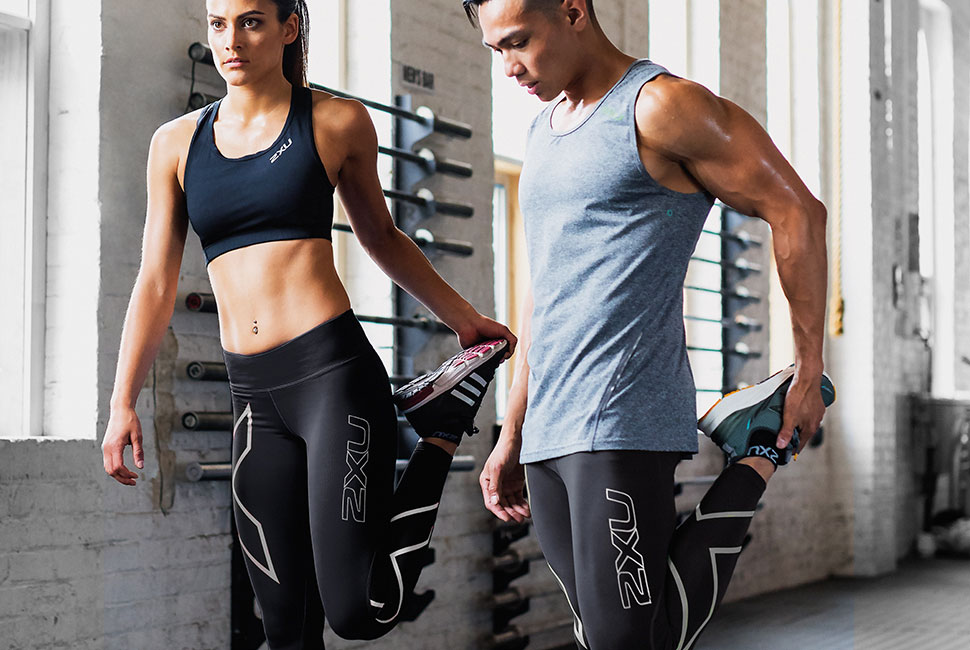
Compression wear – from the average gym goer and weekend runner, to the professional athlete. No doubt you’ve seen compression garments being worn plenty of times before. But how effective is compression wear for the non athlete? Is it just a fashion fad or is it a legitimate option for increased performance and recovery? We sat down with Australian Olympic team physio and runner Myles Burfield to discuss.
1. Are compression garments necessary for increased performance and recovery?
At the amateur level compression garments are not necessary, although they could be beneficial depending on your reasons for using them. From a recovery perspective their use is well supported in the research, and they’re used widely within the elite community for travel and improved speed of recovery post high intensity sessions. Their performance benefits are a little more controversial. Some very weak research suggests that their may be some performance benefits across a few different sports (cyclists, netballers, track athletes) although the size of the studies were small, and the improvements were not ‘statistically significant’. This means that they found small changes but after analysis it was not clear if these changes are due to true benefits from compression garments, or just natural differences between the groups (aka sampling error).
2. Are they relevant for the casual/semi casual runner, or only for professionals?
In all honesty, if you’re looking for performance benefits as a casual runner you’re unlikely to find them in your compression garments. Although one of the biggest issues for amateur athletes is they often don’t have the time or resources to do optimal recovery (massage, stretching, proper cool downs). Compression garments can really assist when used after long or hard training sessions, or especially when you are training on consecutive days. A good example for many runners would be racing on a Saturday, and then doing a long run Sunday.
3. In terms of recovery, when is the most optimal time to wear compression garments and for how long?
For recovery compression has been shown to work best when worn within 1 hour of exercising, and kept on overnight. If they are used during exercise benefits have been shown as early as 15minutes post exercise (decreased blood lactate levels in athletes wearing compression), although if you have been exercising without the garments then the priority is to cool your internal body temperature first (water immersion, rest, drinking cool water) before applying compression garments which could make it more difficult to get your body temperature down.
4. From your experience through the AIS, which brand of compression wear did you find the most effective?
The battle of the brands is mainly between 2XU and Skins, and unsurprisingly they have funded much of the research. The bottom line is that more compression gives you more benefits in circulation, although it is often less comfortable to wear for long periods. There are different levels of compression. These are measured in millimetres of mercury (mmHg). The higher the mmHg, the higher the compression:
8-15 mmHg = mild compression.
15-20 mmHg = moderate compression
20-30 mmHg = firm compression
30-40 mmHg = Extra firm compression
When choosing compression garments for sporting or everyday use I usually recommend moderate compression, and choosing the brand that is the most comfortable. If the garment is a good fit, and compression is applied evenly, it should feel comfortable and non-restrictive. We want increased circulation, rather than circulation blocks.
Myles Burfield was an Australian Olympic team physiotherapist at the Rio Olympics, and is also a director at Activate Health and Fitness. Myles is part of JS-PT’s network of health professionals who works with us and our clients for specialised physiotherapy needs.
 Recent studies have questioned the effectiveness of static stretching for performance and flexibility – do you believe this to be accurate and does static stretching still have a place in a runner’s program?
Recent studies have questioned the effectiveness of static stretching for performance and flexibility – do you believe this to be accurate and does static stretching still have a place in a runner’s program?
For years there has been an ongoing debate about the effectiveness of static stretching as preparation for physical activity. The reason for this debate is that some studies have found benefit from static stretching, while some research suggests it may inhibit performance and increase the risk of injury. From my experience it is very dependant on the athlete, and the type of exercise they are planning to engage in. For runners there are key areas where flexibility is imperative, and if you do not have the range of motion in these areas then stretching can be very beneficial in both improving performance and reducing the risk of injury. A good place to start is by ensuring that you have enough ankle dorsiflexion, and hip extension. The images below show the basic tests for these movements. To maintain good running form it is recommended you maintain 10 degrees of hip extension availability, and you are able to achieve 13cm on your ankle dorsiflexion knee to wall test.


How important is strength training for a long distance runner?
Strength is arguably more important than stretching when it comes to running. The forces going through your joints are 250% of your body weight when you jog, and even higher (>400%) when sprinting. To be able to withstand these forces you need a combination of foot, ankle, knee, hip, and core strength. The research suggests that “30-50% of runners will suffer an injury over the course of 12 months”, this is a scary statistic, and the main cause is a lack of running related strength. The 2 best ways to work on your running related strength is:
- Do specific gym exercises that focus on your running propulsion muscles (especially the claves)
- Build your running up slowly so that your body has time to adapt. Stick to the 10% rule and don’t increase you total weekly kilometres by >10% each week
How do you know when to prioritise strength or mobility/stretching?
“A tight muscle is a weak muscle” and for runners the need to stretch often implies as need to strengthen. The easiest way to know if an area needs strengthening is to do some strength tests with a trainer or physiotherapist, but for an easy test at home you should be able to do 30x single leg calf raises on each leg, with no rest. This is the minimum strength to be safe to run 5km regularly (>3 times a week). If your hip extension or ankle mobility are poor then the priority is to stretch these, and restore mobility, before you run. If these areas continually get tight then it’s a strong suggestion that they may need strengthening.
Myles can be found at Activate Health and Fitness as well as at our home at The Fitness Specialists in Milton. Get in contact via myles@activatehf.com.au.
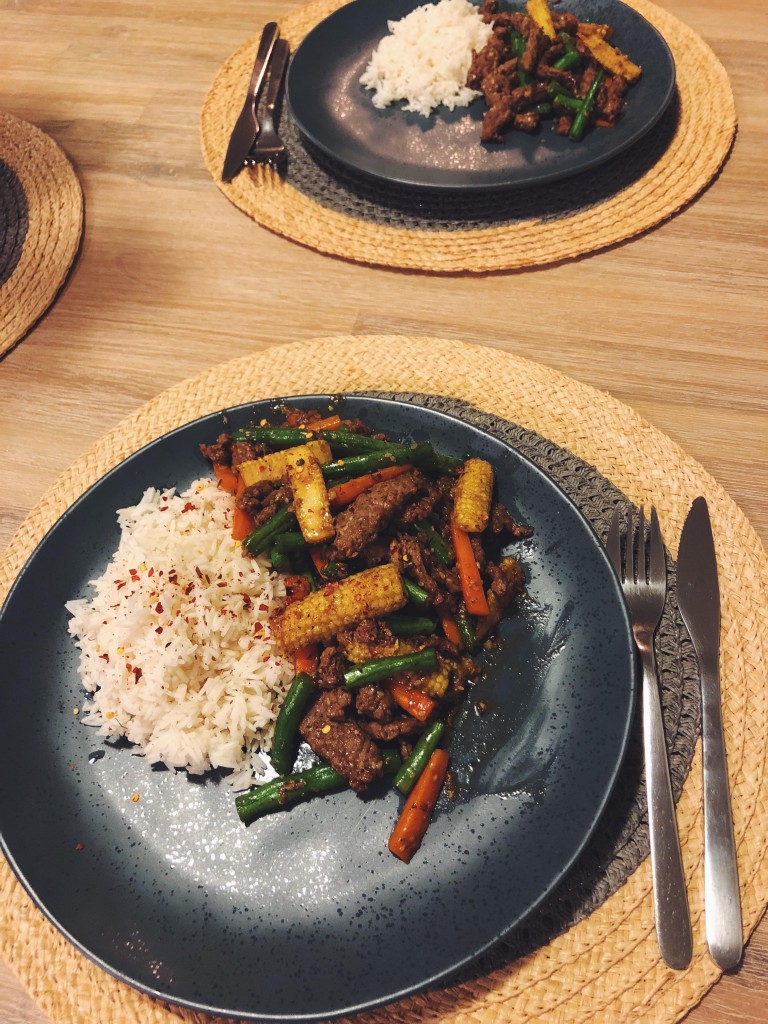
Processed with VSCO with f2 preset
We love a good stir fry as an option for a well balanced meal, and this beef sesame stir fry from taste.com.au was an absolute treat! Try it out.
Ingredients:
- 400g beef stir-fry strips
- 2 tablespoons sesame seeds
- 2 tablespoons vegetable oil
- 2 garlic cloves, chopped
- 2cm piece ginger, finely grated
- 1 carrot, peeled, cut into thin strips
- 115g baby corn, halved lengthways
- 150g green beans, trimmed
- 2 tablespoons Chang’s oyster sauce
- 2 tablespoons fish sauce
- 3 teaspoons caster sugar
- steamed jasmine rice, to serve
Method:
- Combine beef and sesame seeds in a bowl. Toss to coat.
- Heat a wok or frying pan over medium-high heat. Add 1 tablespoon of oil. Swirl to coat. Add half the beef mixture. Stir-fry for 1 to 2 minutes or until browned. Remove to a plate. Repeat with remaining beef mixture. Set aside. Add remaining oil, garlic and ginger to wok. Stir-fry for 1 minute or until aromatic. Add carrot, corn and beans. Stir-fry for 2 to 3 minutes or until vegetables are tender.
- Combine oyster sauce, fish sauce and sugar in a bowl. Stir until sugar is dissolved. Add to wok. Return beef mixture and any juices to wok. Stir-fry for a further 2 minutes or until beef is heated through. Serve with rice.
From taste.com.au.
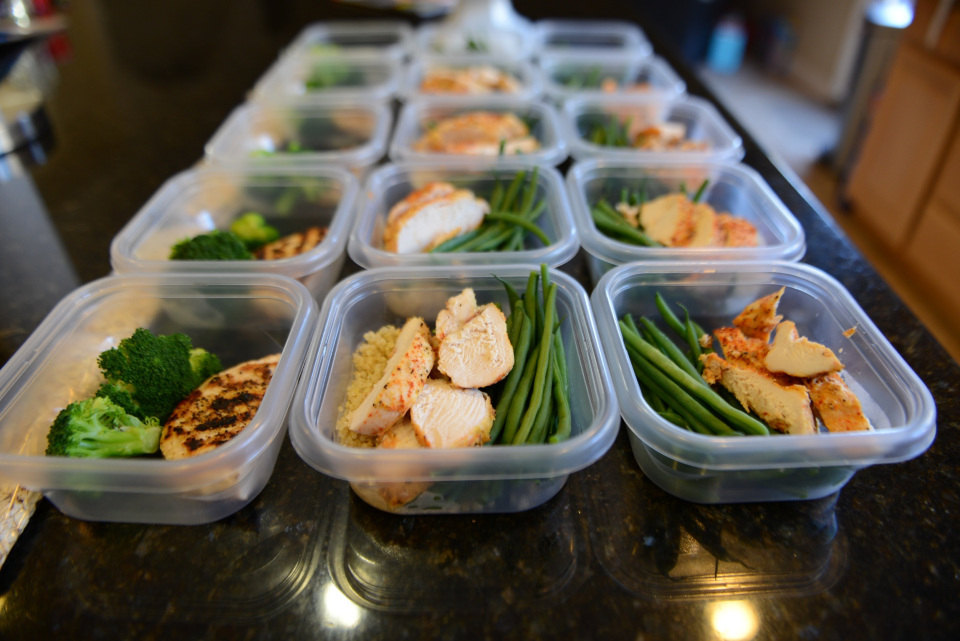
This month, we are excited to welcome back accredited dietician Serena Sullivan from Gather Nutrition. We were able to speak about food preps and kitchen staples, and whether or not preparing foods in advance was the only way forward in terms of improving one’s diet. Without further ado:
As a dietician, do you feel as though the practice of preparing food days in advance is the best way to ensure dietary compliance?
Personally, I am much more successful consuming a healthy, well rounded diet when I spend 20-30 minutes each night preparing meals/snacks as opposed to preparing them all in one go. I feel big batch cooking and a fridge full of tupperware containers can look and feel like ‘dieting’. Some people may be able to do that for a short period of time before they either become bored or they fall off the wagon due to not finding the amount of time required on a weekend.
Can cooking foods in bulk at times be a daunting prospect for someone trying to improve their eating habits?
In my experience, very much so. People can often find bulk prepping quite daunting. Many have good intentions when they set the goal of setting aside time on the weekend to do the planning, shopping, and preparing, but due to the hours this may take, it can be a challenge at times depending on the demands of family/social commitments and the like.
In saying that I have also seen clients who have made it a genuine part of their lifestyle and have sustained it for an extended period! It depends on what will suit your needs and what is a sustainable approach for ongoing success.
What are your favourite staple ingredients to include in your 20-30min prep each night?
My favourites to prepare at night will be a small container of full fat plain greek yoghurt and either a whole fresh piece of fruit or chopped fruit. I’ll always pack a variety of nuts and seeds which sometimes I’ll add to the yogurt or have separately. Its simple but you can’t go wrong with fruit and nuts. This makes for an easy snack throughout the day. I try to buy a few different types of fruit for the sake of variety.
I scale our dinner shopping to serve 4-5 people (only 2 people at home) so there is always left overs for lunches the next day. I’m always sure to have frozen vegetables, microwave rice, wholegrain bread, and some type of salad mixture, that way if dinner left overs are short on vegetables or a carbohydrate source, I can turn to these options to prepare a complete and substantial meal. Having the salad and wholegrain bread on hand usually means I will always have ingredients for a last minute salad sandwich with any vegetables if need be.
How do you ensure your clients are eating the correct portion sizes?
Whilst I educate my clients on serving sizes, I put more emphasis on making sure they are consuming enough food as opposed to food restriction. I put the biggest emphasis on the serving sizes of vegetables and try to encourage increasing vegetables servings. At the end of the day I want people looking at their meal and asking if they can see twice the amount of vegetables than they can see of protein or carbohydrates. If a meal is primarily vegetable based, it will always be nutritious and naturally lower in energy. Encouraging people to start thinking about increasing their vegetable intake (as well as increasing their intake of different varieties of vegetables) will mean they will naturally start to reduce in other areas where they may be over consuming.
I will however speak more specifically about carbohydrate serving sizes with clients who have particular health conditions, such as diabetes or insulin resistance. As a general rule of thumb, I try not too do too much food policing to give clients space to make changes on their own terms!
The Final Word with James:
Remember what may work for others is not necessarily the best option for you. Whether you are preparing your food days in advance in one hit, or doing a little preparation each night, the important thing is to have a plan of sorts. Write down some meals which you can cook, but be sure to pack your kitchen with some staples (think frozen vegetables, canned goods, microwaveable rice/couscous/quinoa, eggs, mixed leaf bags from the supermarket) incase your best intentions don’t come to fruition.
Follow Serena on Instagram @gathernutrition for more great tips!
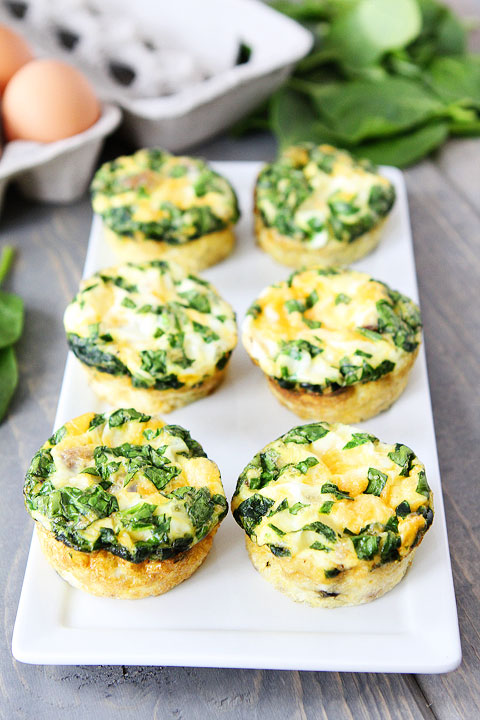
These mini frittatas baked in muffin trays make for a tasty breakfast/brunch option for your weekends at home, and can be reheated in the microwave. Garnish with herbs of your choice (parsley or chives for us) and season with some salt and pepper. Thanks to Two Peas and Their Pod for the idea!
Ingredients:
3 lean breakfast turkey sausage links
5 egg whites
Salt and pepper, to taste
1/4 cup freshly chopped spinach
1/4 cup shredded sharp cheddar cheese
Method:
Preheat the oven to 350 degrees F. In a medium skillet, brown the turkey sausage links on medium-high heat. Cook until sausage is brown all the way through. Cut sausage into 1/2 inch pieces. Set aside.
In a large mixing bowl, whisk together egg whites and eggs. Whisk in skim milk and season with salt and pepper, to taste. Stir in the chopped spinach.
Grease 6 muffin tin cups with cooking spray or line cups with paper liners. Pour egg mixture evenly into the muffin cups.
Distribute cheese and sausage equally between each muffin cup.
Bake egg muffins for 20 minutes, or until the muffins are firm in the center. Remove from oven and gently go round each egg with a butter knife. Serve warm.
Stay in shape this winter (and beyond) by incorporating some our favourites exercises we use in our programming. Some are conventional lifts, while others are variations on classics. Some will be more strength focused, while others will dial up your heart rate. Either way, start doing them now! Here we go:
1. The landmine clean and press.
An advanced full body movement focusing on power, The landmine clean and press is the perfect exercise to throw into a conditioning circuit given the amount of muscles you are working. The added rotational component makes this a go to of ours.
Once you’ve got the flow of the movement, it is actually much easier than it looks. Break it down by practising the following on the landmine attachment:
- Single arm high pull.
- .The pivoting of your feet by 90 degrees while changing the bar between your hands.
- A single arm press.
Note: A landmine exercise refers to an angled barbell movement where one end of the barbell is on the ground (either in an attachment such as above or safely wedged into a corner of a wall/something stable).
2. The forward to reverse lunge
With added volume compared to a traditional lunge, this variation targets the quads and glutes from two different angles, and really ups your heart rate! You don’t need to add much weight to feel this lunge variation in all it’s glory. Try to go from the forward direction to reverse without your foot touching the ground in between for balance. Regarding technique, practice the following:
- On the forward lunge, keep your spine in a straight line perpendicular with the ground.
- On the reverse lunge, hinge/tilt forward at the hips more while maintaining a straight back.
- Aim for at least 6 reps on each side (forward to reverse = 1 rep).
3. The trap bar deadlift
If you’ve been following us for a while you’ll know we love deadlifting and we will always recommend the movement, but in this case we are going to recommend the trap bar variation over the barbell for a number of reasons.
Both the barbell and trap bar deadlift help to increase hip mobility and increase strength through the posterior chain (lower and upper back, glutes, hamstring muscles), however the trap bar has less of a load on your spine due the torso being more upright. It could be a good starting point if you lack control and stability through your lower back. The neutral grip positioning of your hands (palms facing towards your body) are also much easier in terms of shoulder stability.
4. Pull Ups
Executing a pull up from a full hanging position is one of the toughest upper body exercises you can do, and requires plenty of strength through your upper back muscles, shoulders, and biceps.
Brace the glutes, keep the core tight, and envision pulling the bar towards your chest. As fitness expert and strength coach Bret Contreas says, think of the pull up/chin up as a moving plank and keep a straight line from the shoulders to the knees throughout the movement. Vary your grips and hand spacing to help improve your performance.
Also, your lats (upper back muscles which run from your shoulders to your hips) are one of the primary muscles being used in a pull up, and are key muscles of your core so strengthening them can assist in improving your squat and deadlift.
5. Goblet Squats
A much more natural squat position in comparison to a front and back squat, the goblet squat should be the starting point for all weighted squats as it allows you to set a rigid spine and perfect the balance and movement of a squat. As well as a starting point, there are benefits to programming variations of the goblet squats for people of all levels.
The goblet squat will help you improve the upright torso position that is needed for more advanced exercises (such as cleans, front and back barbell squats, amongst others), as well as being a great exercise for the quads, core, and upper back. Due to the upright torso position, this also allows for less stress through your lower back.
James
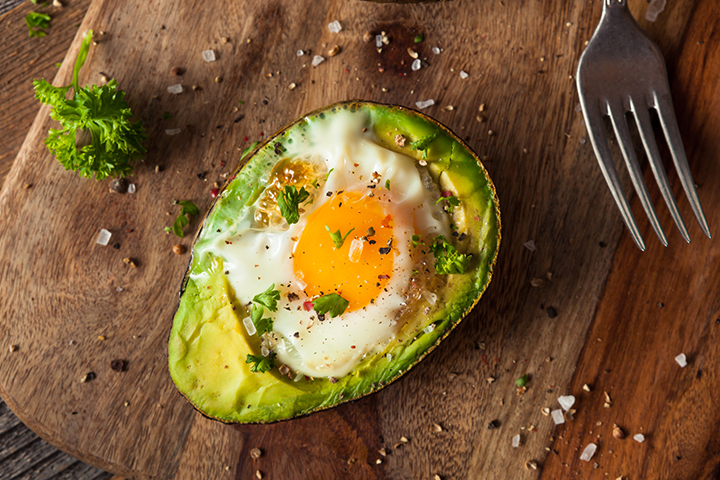
Start your day with an easy to prepare ‘protein and produce’ type breakfast, packed full of nutrients, and sugar free!
Ingredients:
- 6 avocados halved and seeded
- 6 large eggs
- salt and pepper, to taste
- 2 tablespoons chopped chives
Method:
- Preheat oven to 425 degrees F. Lightly oil a baking sheet or coat with nonstick spray.
- Using a spoon, scoop out about two tablespoons of avocado flesh, or more, as needed, creating a small well in the center of each avocado.
- Gently crack 1 egg, and slide it into the well, keeping the yolk intact. Repeat with remaining eggs; season with salt and pepper, to taste.
- Place into oven and bake until the egg whites have set but the yolks are still runny, about 15-18 minutes.
- Serve immediately, garnished with chives, if desired.
From https://damndelicious.net/2016/10/05/baked-eggs-in-avocado/
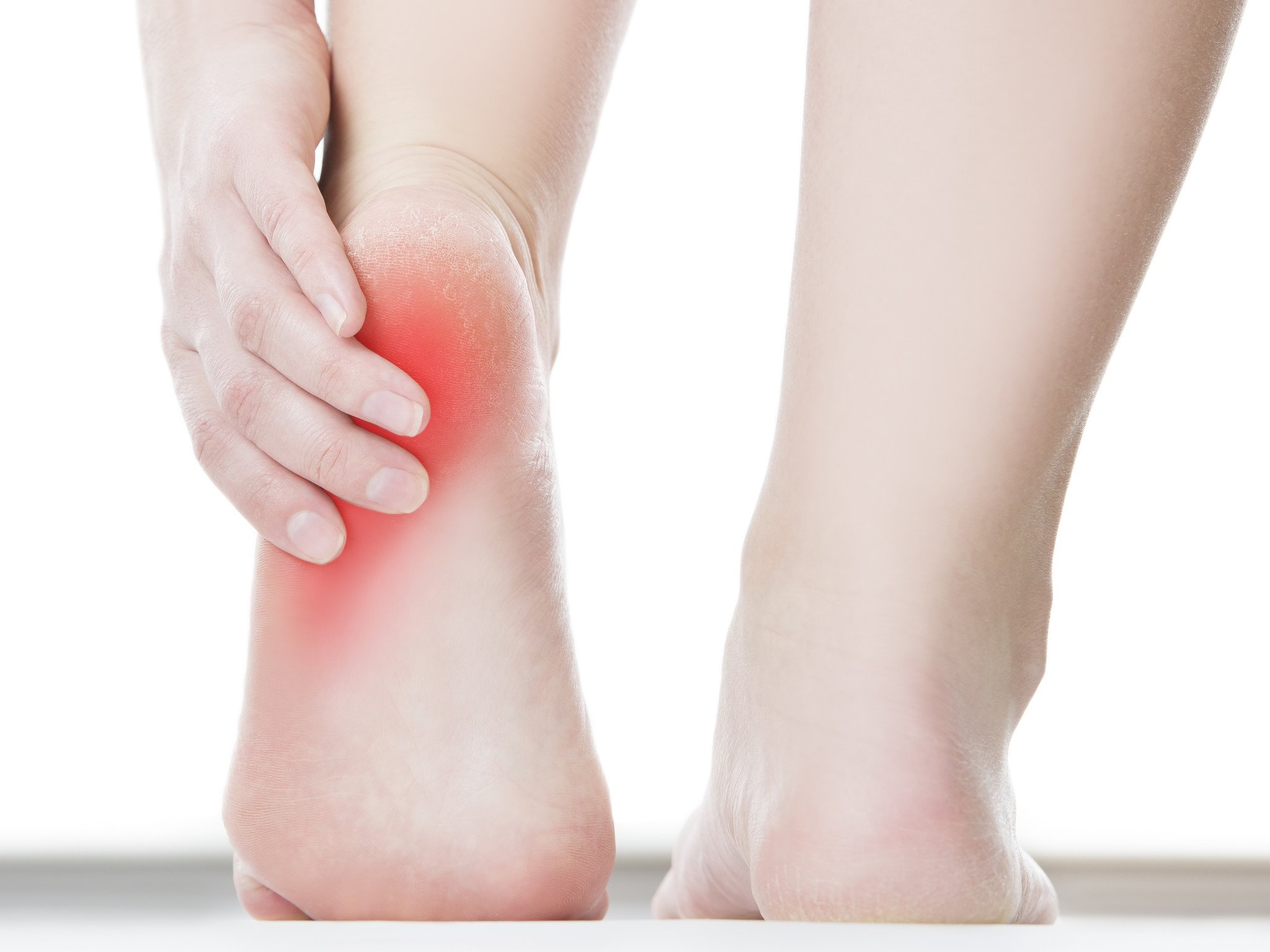
Hello again to the readers of the JS-PT Blog. I felt very honoured to be asked to write another article for you, this time delving into the all too common complaint of plantar fasciitis related heel pain (also referred to as fasciopathy, or fasciosis). In my 6+ years as a practising Podiatrist, I can confidently say that pain under the heel can be a very common issue with a number of possible causes, making it quite handy to have a professional on your side when it comes to treatment. With that in mind, this article, although not exhaustive, will hopefully give you a brief insight into this complex condition and provide some general information regarding treatment. Also, don’t forget to check out our video on the JS-PT Instagram on two quick ways you can directly mobilise the plantar fascia by way of massage and fascia release.
What is plantar fasciitis?
Plantar fasciitis is generally considered to be an overuse condition affecting the strong band of connective tissue (called the plantar fascia) that runs from the front of the heel to the ball of the foot. The role of the plantar fascia is to help to provide support when we’re up on our feet. Normally, the fascia is able to its job without any dramas however in some cases, overstretching and micro-trauma can occur, resulting in pain. This pain is often described by my patients as a sharp pain in the heel after rest (such as getting out of bed or after sitting/lying down), which then gradually dissipates as they “warm up”.
At this point, I think it is important to note that more than one diagnosis is possible for pain around the heel making adequate assessment from a health professional key.
How is it caused?
As plantar fasciitis is an overuse injury, it can theoretically be caused by anything that places excessive strain on the plantar fascia. As a result, common risk factors seen in practise are as follows (this list is not exhaustive):
- Increased BMI (body mass index)
- Poor foot and lower limb mechanics (such as having flat or high-arched feet)
- Wearing unsuitable footwear
- Occupation-related stresses (e.g. excessive periods of sitting or standing)
- Muscle tightness or imbalances
- Pregnancy
In addition, the onset of pain may correlate to a lifestyle change, such as new shoes or the alteration of a training program and exercise levels.
Can this affect the rest of my body?
You bet it can! As a lot of you would know, foot pain is incredibly frustrating as it affects us with every step. Our body, being the intuitive machine that it is, will try and avoid this pain by way of limping or altering its posture to reduce load from a particular structure (you may see where I’m going with this).
Prolonged foot pain can lead to compensatory action from other areas, changing your lower limb mechanics and possibly causing secondary pain in your ankles, shins, knees, hips, or lower back. It can also work the other way around. The cause of your heel pain can sometimes be due to something occurring higher up such as core and/or glute weakness, or misalignment of the lower leg – it’s a two-way street!
What about treatment?
There are a number of different treatment strategies available for plantar fasciitis. For example, some of the conservative treatment techniques available include:
- Rest and icing to manage symptoms
- Specially prescribed stretches
- Mobilisation and massage from a suitably qualified health professional
- At home self-treatments
- Strengthening exercises
- Certain strapping/taping techniques
This list is not exhaustive and some of the techniques above may be more suitable than others depending on the underlying cause. As a result, I would really like to emphasise that plantar fasciitis and heel pain can be complex in nature, with a variety of factors involved in its onset. This is why making an appointment with a Podiatrist is highly recommended as a more in-depth biomechanical assessment can be performed. This not only ensures that the correct diagnosis is made, but a suitable individualised treatment plan may be devised. Moreover, some people require additional support through an orthotic device to help improve function of the foot and lower leg.
For your health and wellbeing:
Remember, a person’s health and circumstances are unique. This information is general in nature and is not intended to replace individual professional advice or the opinion of your medical practitioner. Always seek the advice of a qualified health professional before making any decisions about your health.
Reference:
Brukner, P., & Khan, K. (2012). Clinical Sports Medicine (4th ed.). McGraw-Hill Professional Publishing.
Special thanks to Matt McKean and InStep Podiatry for the special guest blog. For specialist podiatry appointments, find them here.
For more information on training with the team at JS-PT, email us at info@js-pt.com.au.
 Beginners will master the foundations of resistance training in this semi-private, four-week program delivered by JS-PT’s qualified and experienced health professionals.
Beginners will master the foundations of resistance training in this semi-private, four-week program delivered by JS-PT’s qualified and experienced health professionals. 















